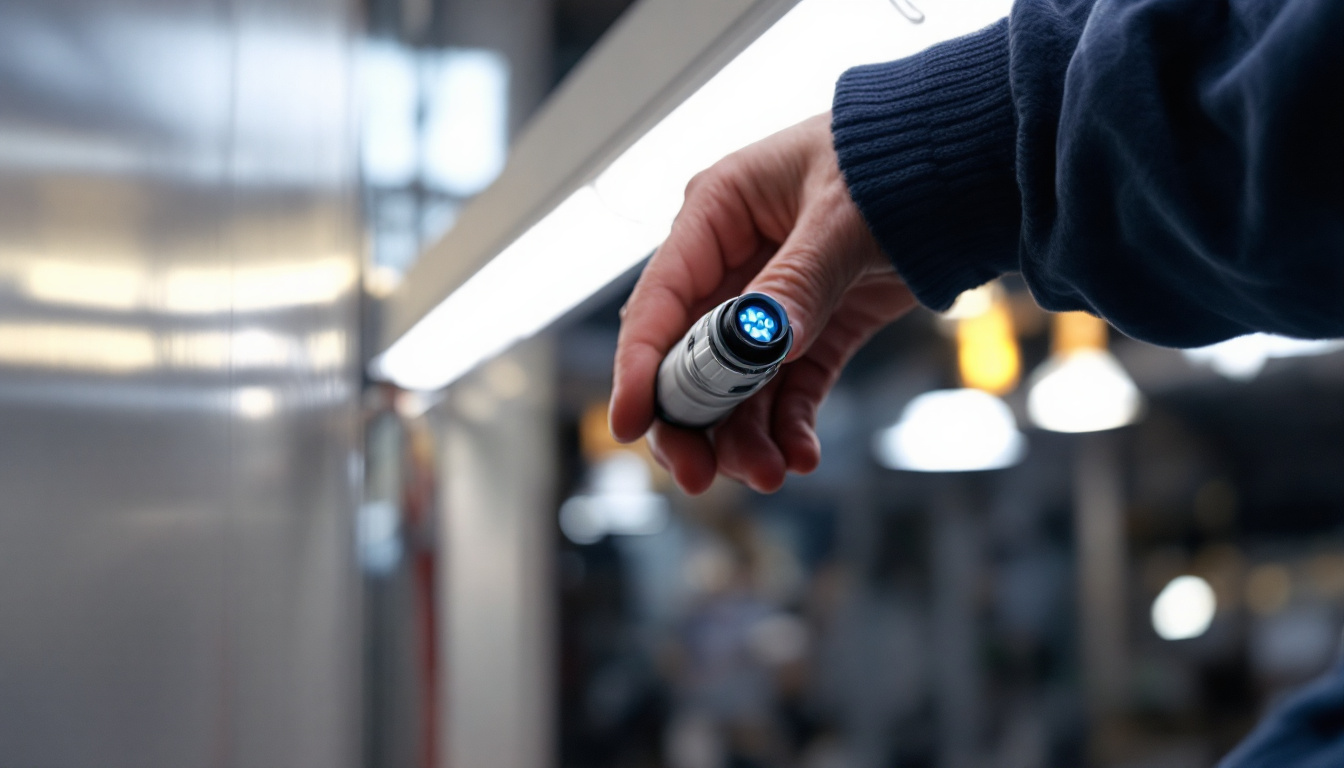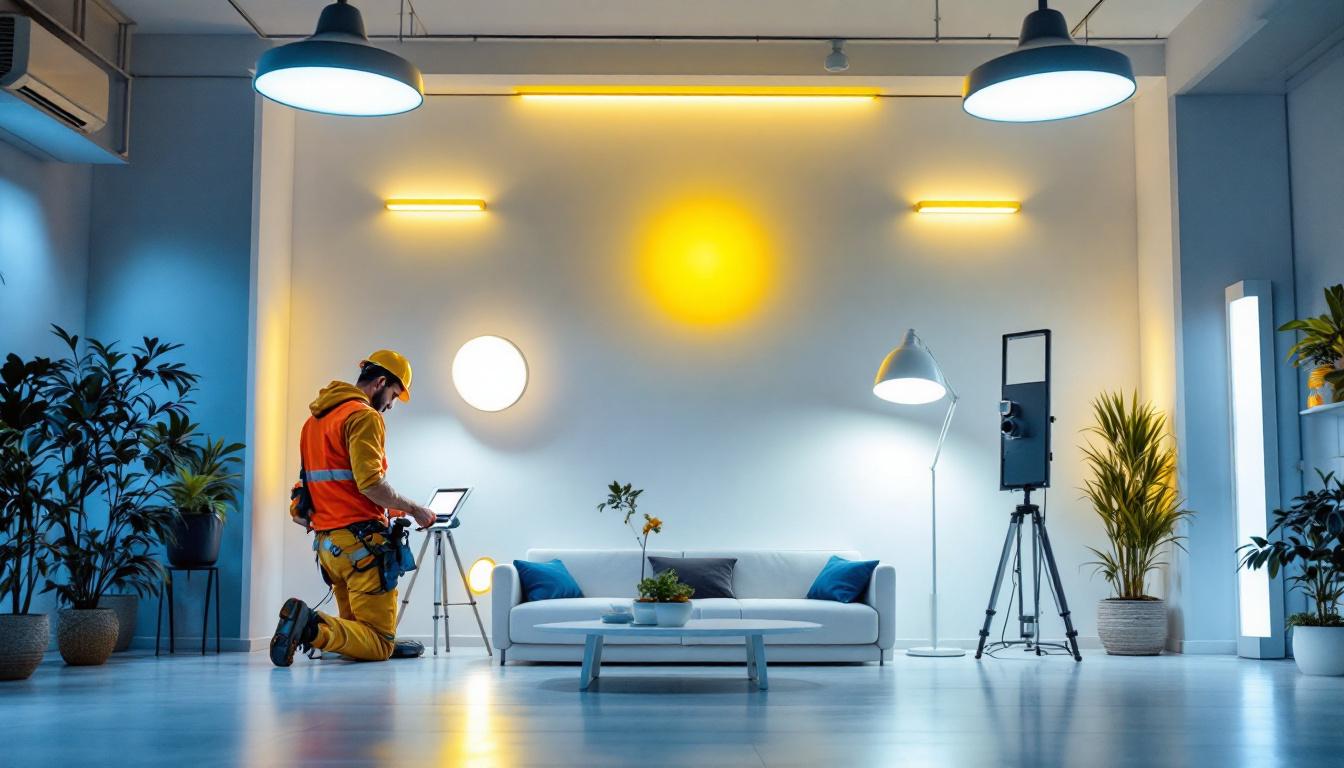
In the evolving landscape of lighting technology, LED ballast replacement has become a crucial aspect for lighting contractors. As businesses and homeowners alike shift towards energy-efficient solutions, understanding the intricacies of LED ballast replacement is essential for delivering quality service. This article offers valuable insights and practical tips that can help lighting contractors navigate the complexities of LED ballast replacement effectively.
LED ballasts play a pivotal role in the operation of LED lighting systems. Unlike traditional fluorescent ballasts, which regulate the current to the lamp, LED ballasts are designed to provide the necessary power and control for LED fixtures. Recognizing the differences between these two types of ballasts is fundamental for contractors looking to upgrade or replace existing lighting systems.
There are primarily two types of LED ballasts: external and internal. External ballasts are separate units that connect to the LED fixture, while internal ballasts are integrated within the fixture itself. Understanding the distinction between these types is crucial for determining the best replacement strategy for a specific lighting application.
External ballasts offer flexibility, allowing contractors to replace them independently of the fixture. This can be advantageous in situations where only the ballast is faulty, enabling cost-effective repairs. On the other hand, internal ballasts often require the entire fixture to be replaced if they fail, which can lead to increased costs for both the contractor and the client.
Replacing outdated ballasts with LED-compatible options can yield numerous benefits. Firstly, LED ballasts are typically more energy-efficient, leading to reduced electricity costs. This is particularly appealing for commercial clients looking to lower operating expenses.
Additionally, LED ballasts have a longer lifespan compared to traditional options. This longevity translates to fewer replacements and maintenance visits, which can enhance customer satisfaction and improve the contractor’s reputation for reliability.
Moreover, the adoption of LED ballasts can significantly contribute to a more sustainable environment. With their lower energy consumption, they help reduce the carbon footprint associated with lighting. Many municipalities and organizations are now incentivizing the switch to LED technology, offering rebates and tax incentives that can further offset initial investment costs. This not only promotes energy conservation but also aligns with the growing global emphasis on sustainability and eco-friendly practices.
Furthermore, LED ballasts often come equipped with advanced features such as dimming capabilities and smart technology integration. These functionalities allow for greater control over lighting conditions, enabling users to adjust brightness levels according to specific needs or preferences. This adaptability can enhance the overall ambiance of a space, making it more conducive to various activities, whether in a retail environment, office, or residential setting. As technology continues to evolve, the integration of LED ballasts with smart home systems is becoming increasingly prevalent, paving the way for a more interconnected and energy-efficient future.
Before embarking on a ballast replacement project, thorough preparation is essential. This stage involves assessing the current lighting system, gathering necessary tools, and ensuring compliance with safety standards.
Contractors should begin by evaluating the existing lighting system. This includes identifying the type of ballast currently in use, as well as the wattage and configuration of the fixtures. Understanding these details will inform the selection of the appropriate LED ballast replacement.
Additionally, it’s important to consider the specific needs of the client. Factors such as the intended use of the space, desired brightness levels, and color temperature preferences should all be taken into account when recommending a replacement solution.
Having the right tools on hand is crucial for a successful ballast replacement. Essential tools may include screwdrivers, wire strippers, multimeters, and electrical tape. Contractors should also ensure they have the correct replacement ballasts, which should be compatible with the existing fixtures and meet the required specifications.
It’s advisable to double-check inventory before arriving at the job site to avoid delays. A well-prepared contractor can streamline the replacement process and minimize downtime for the client.
Safety is paramount in any electrical work. Before starting the replacement process, contractors must ensure that the power to the lighting system is turned off. This can be done by switching off the circuit breaker or removing the fuse associated with the lighting circuit.
Additionally, wearing appropriate personal protective equipment (PPE), such as gloves and safety goggles, is essential to protect against potential hazards. Following local electrical codes and regulations will also help ensure that the work is compliant and safe.
The actual process of replacing an LED ballast can vary depending on the type of ballast and fixture. However, there are general steps that contractors can follow to ensure a smooth and efficient replacement.
To begin, contractors should carefully remove the fixture cover or lens to access the ballast. This often involves unscrewing or unclipping the cover, which should be handled with care to avoid damage. Once the cover is removed, the old ballast can be located.
Disconnecting the old ballast typically involves unscrewing it from its mounting bracket and carefully detaching the wiring connections. It’s advisable to take note of how the old ballast is wired, as this will serve as a guide for connecting the new ballast.
With the old ballast removed, the next step is to install the new LED ballast. Begin by securing the new ballast to the mounting bracket, ensuring it is firmly in place. Following the wiring diagram or notes taken during the removal process, connect the new ballast to the fixture’s wiring. Proper connections are critical to ensure functionality and safety.
Once the wiring is complete, contractors should double-check all connections and ensure that there are no exposed wires. Using electrical tape to secure connections can help prevent short circuits and enhance safety.
After the new ballast is installed, it’s time to test the system. Before replacing the fixture cover, turn the power back on and observe the operation of the new LED ballast. The lights should illuminate without flickering or dimming. If any issues arise, it may be necessary to troubleshoot the wiring or connections.
Once confirmed that the system is functioning correctly, the final step is to replace the fixture cover or lens. This not only protects the internal components but also enhances the overall appearance of the lighting fixture.
While LED ballast replacement can be straightforward, contractors may encounter challenges along the way. Being aware of these potential issues and having solutions on hand can help ensure a successful project.
One common challenge is compatibility between the existing fixtures and the new LED ballasts. Not all ballasts are designed to work with every type of fixture, which can lead to performance issues. To mitigate this, contractors should always verify compatibility before purchasing new ballasts.
Consulting manufacturer specifications and product datasheets can provide clarity on which ballasts are suitable for specific fixtures. Additionally, reaching out to suppliers for recommendations can help contractors make informed decisions.
Wiring complications can arise during the replacement process, particularly in older buildings where wiring may not conform to modern standards. In such cases, it may be necessary to update the wiring to ensure safety and compliance.
Contractors should be prepared to troubleshoot wiring issues and, if needed, consult with a licensed electrician for assistance. Ensuring that all wiring is up to code is critical for the safety of the installation and the satisfaction of the client.
Effective communication with clients is vital throughout the replacement process. Contractors should keep clients informed about the progress of the project, any challenges encountered, and the expected completion time. This transparency builds trust and ensures that clients feel involved in the process.
Additionally, providing clients with information about the benefits of LED technology and the long-term savings associated with energy-efficient lighting can enhance their overall satisfaction and encourage future business.
Once the LED ballast replacement is complete, there are several post-replacement considerations that contractors should keep in mind. These steps can help ensure the longevity of the new installation and maintain client satisfaction.
Educating clients about the maintenance of their new LED lighting system can help prolong its lifespan. Simple tips, such as regularly cleaning fixtures to remove dust and debris, can enhance performance and efficiency.
Contractors can also recommend scheduling periodic inspections to identify any potential issues before they become significant problems. This proactive approach can save clients money in the long run and reinforce the contractor’s commitment to quality service.
Many LED ballasts come with warranties that cover defects and performance issues. Contractors should inform clients about the warranty terms and conditions, ensuring they understand what is covered and for how long. This information can provide peace of mind and enhance the client’s trust in the contractor’s work.
Finally, gathering feedback from clients after the completion of the project can provide valuable insights. This feedback can help contractors identify areas for improvement and refine their processes for future projects. Additionally, satisfied clients are more likely to provide referrals and repeat business, making feedback an essential aspect of building a successful contracting business.
LED ballast replacement is an essential skill for lighting contractors, offering opportunities for energy savings and improved lighting quality. By understanding the types of LED ballasts, preparing adequately for replacements, and navigating common challenges, contractors can enhance their service offerings and achieve client satisfaction.
With careful attention to detail, effective communication, and a commitment to quality, lighting contractors can master the art of LED ballast replacement, positioning themselves as trusted experts in the industry. As the demand for energy-efficient lighting continues to grow, embracing these practices will ensure success in the ever-evolving world of lighting technology.
Ready to elevate your lighting projects with the best LED ballasts on the market? Look no further than LumenWholesale, where we provide contractors with spec-grade lighting products at unbeatable wholesale prices. Say goodbye to local distributor markups and hello to our extensive selection that meets the highest industry standards. With LumenWholesale, you can count on reliable, high-performance lighting for every project. Plus, enjoy the convenience of bulk buying with free shipping, ensuring you get the premium lighting you need at the best value — without hidden fees or compromises. Don’t miss out on quality, affordability, and convenience. Wholesale Lighting at the Best Value is just a click away!

Discover the insider secrets of lighting contractors as they unveil the best practices for mastering commercial outdoor LED lighting.

Discover the essential halogen light bulb socket types and avoid common pitfalls with this expert lighting contractor’s guide.

Discover how the Wago 221-413 connector can revolutionize your lighting projects by reducing costs and improving efficiency.

Discover expert insights and practical tips for lighting contractors on optimizing room LED lighting.